Renewable Energy Integration
For maximizing renewable energy plant benefit
Maximize renewable energy plant benefit with Peak and Valley Energy Arbitrage
In many countries, renewable energy from solar and wind follows a peak and valley pricing system. Selling during peak hours lets you achieve higher profits. When prices drop, storing energy in a Battery Energy Storage System (BESS) ensures you can release it later at more profitable times. This strategy helps you maximize earnings.
In some regions, new rules limit how much renewable energy can be fed into the grid at certain hours, especially around midday. With these restrictions, a BESS is no longer optional. It gives renewable energy businesses the flexibility to store electricity and sell it exactly when market conditions are most favorable.
FFD POWER Peak-Valley Solution
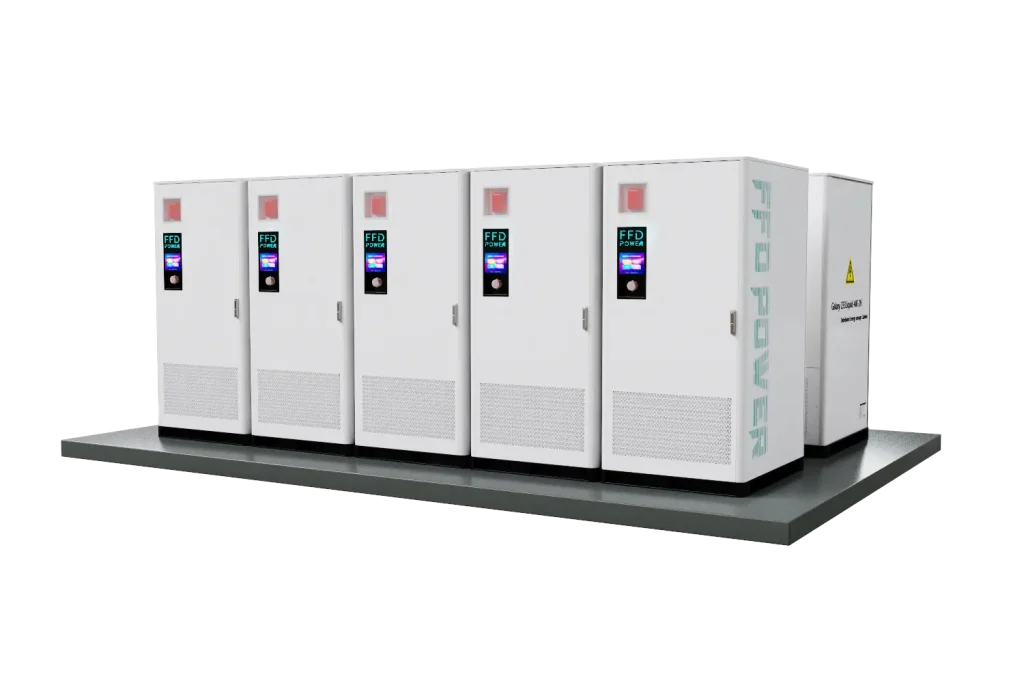
Distributed AC coupling BESS
FFD Power’s Cabinet BESS provides a nominal capacity of 233 kWh with 100 kW charging and discharging power. The system can scale from 233 kWh to 7 MWh, making it suitable for small and medium-sized businesses as well as industrial users. It is especially valuable for companies applying peak-valley arbitrage strategies.
Each battery cluster connects to its own Power Converting System (PCS). This design ensures every cabinet operates autonomously. If one cabinet encounters a fault, the other cabinets continue to work without interruption. As a result, the overall system performance remains stable and unaffected.
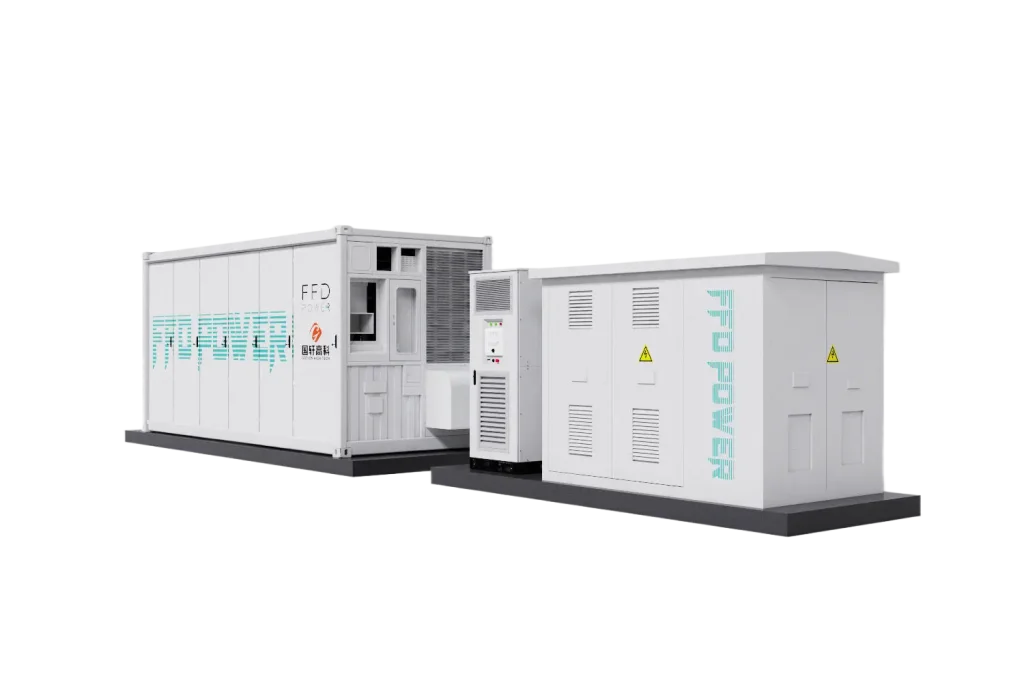
Concentrated DC coupling BESS
FFD Power’s Containerized BESS provides a nominal capacity of 3.42 MWh. Its charging and discharging power ranges from 1250 kW to 1725 kW. This scalable solution can grow from 3.42 MWh to 102.6 MWh, making it a strong fit for medium and large-scale industrial users. Grid operators can also benefit, especially when applying peak-valley arbitrage strategies.
In this system, the batteries are separate from the Power Converting System (PCS). This setup allows for simple scalability. By connecting multiple systems in parallel, operators can achieve much larger capacities.
The containerized design is both space-saving and economical. It maximizes efficiency while lowering operating costs, making it an ideal choice for businesses aiming to optimize energy use and savings.
System design
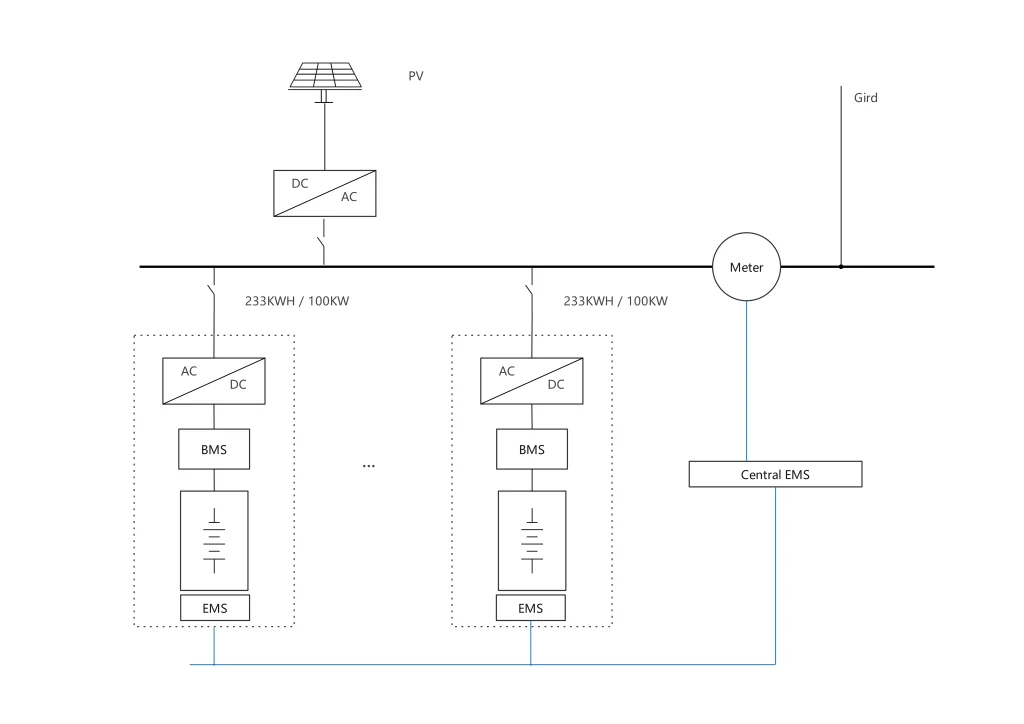
7MWH Distributed BESS
FFD Power’s system connects 30 cabinets in parallel on the AC side. Each cabinet is equipped with a Power Converting System (PCS) that delivers up to 100 kW of continuous charging and discharging power.
The Battery Energy Storage System (BESS) is AC-coupled with the PV system at the connection point. This design allows smooth and efficient integration between solar generation and storage.
Each cabinet includes a 233 kWh LiFePO₄ battery storage unit and its own Energy Management System (EMS). A central EMS communicates with all cabinet-level EMS units and the meter at the connection point. It coordinates charging and discharging power as well as the timing of each cycle.
The system includes a zero import function. This ensures that all charging energy comes directly from the PV system, without drawing power from the grid.

102.6 MWH Concentrated BESS
FFD Power’s system connects 30 containerized BESS units in parallel on the AC side. The setup follows transformers that convert the 690 Vac output from the 1725 kVA PCS to the rated connection point voltage.
The Battery Energy Storage System (BESS) is AC-coupled with the PV system at the connection point. This design allows smooth and reliable integration between solar power and energy storage.
Each containerized BESS includes a 3.42 MWh LiFePO₄ battery, a 1725 kW Power Converting System (PCS), an AC transformer, and its own Energy Management System (EMS). These components ensure stable performance and independent operation at the unit level.
A central EMS communicates with all container EMS units and the meter at the connection point. It manages both charging and discharging power, as well as timing, to maximize efficiency.
The system includes a zero import function. This ensures that charging energy comes exclusively from the PV system, without drawing power from the grid.
Automatic Renewable Arbitrage BESS
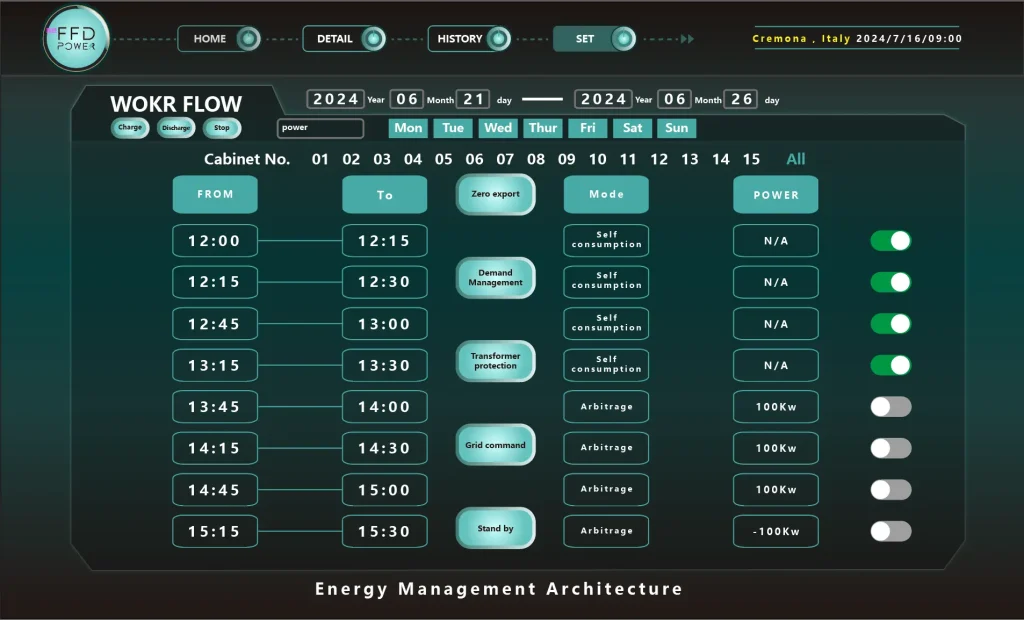
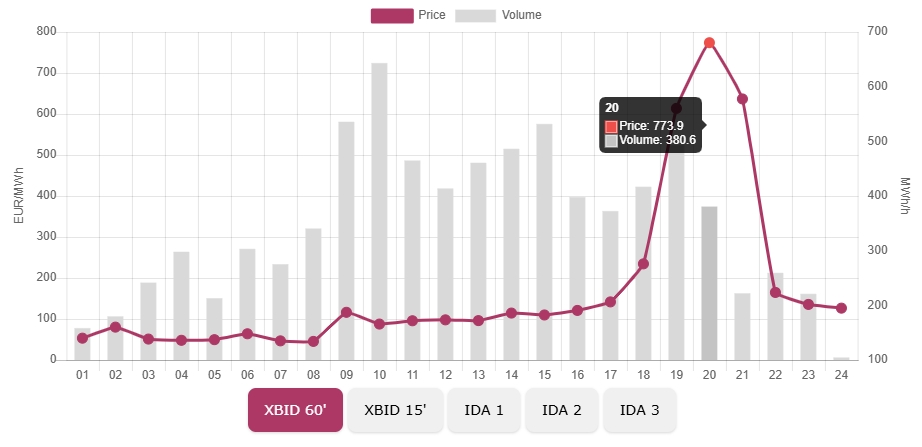
On Thursday, August 29, 2024, the price and volume curve in Bulgaria shows clear seasonal behavior. During summer PV production, energy generation begins around 6:00 AM. It peaks between 10:00 AM and 4:00 PM, and typically ends by 8:00 PM. In this period, market prices remain low.
The low-price window is ideal for battery charging. By charging the system fully before 5:00 PM, you can prepare for the evening price increase.
Prices rise after 5:00 PM and reach their highest levels between 7:00 PM and 9:00 PM. Discharging energy from the battery in this window ensures maximum financial return.
FFD Power’s Energy Management System (EMS) provides precise scheduling. It adjusts charging and discharging power every 15 minutes, enabling dynamic optimization and higher profitability.
In addition to pre-setting charging and discharging power and time, our system includes advanced functions that enhance performance and protection.
The Zero Import function ensures that battery charging uses only PV-generated energy, not electricity from the grid. Because PV output is variable and depends on weather conditions, charging power must match the available PV supply.
For example, if the PV system produces 1000 kW, the battery charging power cannot exceed 1000 kW during that period. This feature maximizes renewable energy use and supports grid independence.
In rare cases, energy prices may turn negative while the battery is already fully charged. To avoid losses, our Energy Management System (EMS) prevents any energy export. It sends a direct command to the PV inverter to stop production immediately.
To make this process reliable, a clear communication protocol must be established with the PV inverter. In addition, the EMS is customized to handle this extreme condition, ensuring safe and seamless operation.
15 Mins Action
Granular 15-Minute Control
A 15-minute setting gives the system more flexibility and responsiveness. It helps manage loads effectively and maximize financial returns. In Europe, where electricity prices update every 15 minutes, this feature is essential for staying competitive.
Higher Flexibility and Precision
With a 15-minute setting, charging and discharging power can be adjusted more frequently. This allows quick responses to price changes, load variations, or grid conditions. In contrast, a 1-hour setting might miss short but important market opportunities.
Maximized Cost Savings
Electricity prices often fluctuate within the same hour. A 15-minute setting makes it possible to charge during brief low-price windows and discharge during high-price peaks. In European markets, this real-time optimization results in greater savings compared to hourly adjustments.
Better Load Management
Facilities with variable loads benefit from more precise balancing. The system can align battery supply with actual demand every 15 minutes. This reduces the risk of overloading transformers and avoids wasting battery capacity.
Enhanced Grid Interaction
Frequent adjustments allow better synchronization with grid conditions. The system can respond to demand response signals or frequency regulation needs. In many cases, this creates additional revenue streams through grid support programs.
Increased System Efficiency
Fine-tuning every 15 minutes keeps the battery closer to its optimal operating range. This improves efficiency and extends battery life, protecting your investment over the long term.
